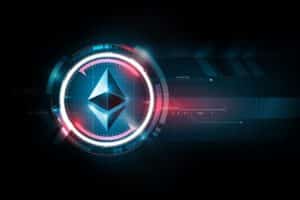
For many, rollups may be one of the solutions to solve the known scalability problems of the Ethereum network.
Improving the scalability of the Ethereum blockchain through rollups

The big boom in NFTs and decentralized finance has once again highlighted the problems of scalability, sustainability and cost-effectiveness of the Ethereum blockchain network. Much hope is being placed on the new Merge update, which will be launched on 19 September.
There are still many doubts about the real scope that this update will have, especially on the scalability of the network, which is expected to get, at least initially, few benefits from this update. Currently, Ethereum can handle about 15 transactions per second, compared to Visa’s 24,000 and Solana’s 50,000. Clearly, as also stated by founder Buterin himself, this is a serious problem for the network and those who use it.
High hopes are placed on rollups, which should increase transactions per second, making it much easier and cheaper to use the network.
Ethereum rollups have the function of collecting many transactions in a single block, making the network much faster.
They come in two forms: optimistic rollups and zero-knowledge rollups.
Rollups therefore greatly reduce the cost of a transaction. They also speed things up: the rollup is very fast to execute and the Ethereum blockchain only needs to process a single transaction instead of many.
Rollups are a kind of hybrid layer 2 blockchain that have the merit of scaling down the difficulties of the network with little or no changes needed, and especially without sacrificing what is most important: security. And that is why they are currently considered the best solution to quickly and securely improve the scalability of the Ethereum blockchain.
The main differences between the two rollups
To check that the transactions are correct there are two different types of proofs for the two types of rollups: for Optimistic rollups: it uses fraud proofs, while for ZK rollups it uses validity proofs.
Optimistic rollups assume that the data grouped in a single block is valid and that no one is trying to fool the blockchain by hiding transactions within the rollups. Optimistic rollups must allow some time for users to perform so-called fraud proofing (1 to 2 weeks).
The two largest ORs are Arbitrum, which has not yet released a token, and Optimism, which launched a token on 1 June this year.
Zero-knowledge rollups (zk rollups) are based on a piece of cryptography called zero-knowledge proof, which allows someone to prove mathematically that a statement is true. This represents the real difference from optimistic rollups and may be the most important innovation to accelerate Ethereum’s scalability, according to a report recently presented by consulting firm 21Shares.
In contrast to optimistic rollups, zero-knowledge rollups may have some compatibility issues with Ethereum’s EVM. In addition, ZK rollups have much higher computational requirements than optimistic ones.
According to some estimates, the combination of these two rollups could soon lead Ethereum to reach a speed of 100,000 transactions per second.
The post The role of rollups in Ethereum’s scalability appeared first on The Cryptonomist.


















